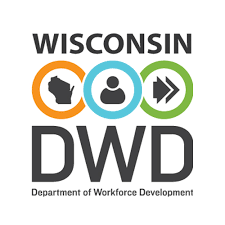Total nonfarm payroll employment increased by 187,000 in August, and the unemployment rate rose to 3.8 percent, the U.S. Bureau of Labor Statistics reported today. Analysts had anticipated job growth around 170,000.
Employment continued to trend up in health care, leisure and hospitality, social assistance, and construction. Employment in transportation and warehousing declined. Today’s release presents statistics from two monthly surveys. The household survey measures labor force status, including unemployment, by demographic characteristics. The establishment survey measures nonfarm employment, hours, and earnings by industry.
Household Survey Data
The unemployment rate rose by 0.3 percentage point to 3.8 percent in August, and the number of unemployed persons increased by 514,000 to 6.4 million. Both measures are little changed from a year earlier, when the unemployment rate was 3.7 percent and the number of unemployed persons was 6.0 million.
Among the major worker groups, the unemployment rates for adult men (3.7 percent), whites (3.4 percent), and Asians (3.1 percent) rose in August. The jobless rates for adult women (3.2 percent), teenagers (12.2 percent), Blacks (5.3 percent), and Hispanics (4.9 percent) showed little change over the month. (See tables A-1, A-2, and A-3.)
Among the unemployed, the number of job losers and persons who completed temporary jobs increased by 294,000 to 2.9 million in August, offsetting a decrease of 280,000 in July. In August, the number of new entrants edged up to 597,000. (New entrants are unemployed persons with no previous work experience.)
Both the number of persons unemployed less than five weeks, at 2.2 million, and the number of long-term unemployed (those jobless for 27 weeks or more), at 1.3 million, edged up in August. The long-term unemployed accounted for 20.3 percent of all unemployed persons.
In August, the labor force participation rate rose by 0.2 percent to 62.8 percent, after being flat since March. The employment-population ratio was unchanged over the month at 60.4 percent.
The number of persons employed part time for economic reasons, at 4.2 million, changed little in August. These individuals, who would have preferred full-time employment, were working part time because their hours had been reduced or they were unable to find full-time jobs.
In August, the number of persons not in the labor force who currently want a job was 5.4 million, little changed from the prior month. These individuals were not counted as unemployed because they were not actively looking for work during the 4 weeks preceding the survey or were unavailable to take a job.
Among those not in the labor force who wanted a job, the number of persons marginally attached to the labor force was little changed at 1.5 million in August. These individuals wanted and were available for work and had looked for a job sometime in the prior 12 months but had not looked for work in the 4 weeks preceding the survey. The number of discouraged workers, a subset of the marginally attached who believed that no jobs were available for them, also changed little over the month at 386,000.
Establishment Survey Data
Total nonfarm payroll employment increased by 187,000 in August, less than the average monthly gain of 271,000 over the prior 12 months. In August, employment continued to trend up in health care, leisure and hospitality, social assistance, and construction. Employment in transportation and warehousing declined.
In August, health care added 71,000 jobs, following a gain of similar magnitude in the prior month. Over the month, job growth continued in ambulatory health care services (+40,000), nursing and residential care facilities (+17,000), and hospitals (+15,000).
Employment in leisure and hospitality continued to trend up in August (+40,000). The industry had gained an average of 61,000 jobs per month over the prior 12 months. Employment in the industry remains below its pre-pandemic February 2020 level by 290,000, or 1.7 percent.
in social assistance increased by 26,000 in August, in line with the prior 12-month average gain (+22,000). Over the month, job growth continued in individual and family services (+21,000).
Construction employment continued to trend up in August (+22,000), in line with the average monthly gain over the prior 12 months (+17,000). Within the industry, employment continued to trend up over the month in specialty trade contractors (+11,000) and in heavy and civil engineering construction (+7,000).
Transportation and warehousing lost 34,000 jobs in August. Employment in truck transportation fell sharply (-37,000), largely reflecting a business closure. Couriers and messengers lost 9,000 jobs, while air transportation added 3,000 jobs. Employment in transportation and warehousing had shown little net change over the prior 12 months.
Employment in professional and business services changed little in August (+19,000) and has shown essentially no net change since May. Professional, scientific, and technical services employment continued to trend up over the month (+21,000). In contrast, employment in temporary help services continued to trend down (-19,000) and has declined by 242,000 since its peak in March 2022.
Information employment changed little in August (-15,000). Within the industry, employment in motion picture and sound recording industries decreased by 17,000, reflecting strike activity. Job losses continued in telecommunications (-4,000).
Employment showed little change over the month in other major industries, including mining, quarrying, and oil and gas extraction; manufacturing; wholesale trade; retail trade; financial activities; other services; and government.
In August, average hourly earnings for all employees on private nonfarm payrolls rose by 8 cents, or 0.2 percent, to $33.82. Over the past 12 months, average hourly earnings have increased by 4.3 percent. In August, average hourly earnings of private-sector production and nonsupervisory employees rose by 6 cents, or 0.2 percent, to $29.00. (See tables B-3 and B-8.)
The average workweek for all employees on private nonfarm payrolls edged up by 0.1 hour to 34.4 hours in August. In manufacturing, the average workweek was 40.1 hours for the fifth month in a row, and overtime edged down by 0.1 hour to 3.0 hours. The average workweek for production and nonsupervisory employees on private nonfarm payrolls edged up by 0.1 hour to 33.8 hours.
The change in total nonfarm payroll employment for June was revised down by 80,000, from +185,000 to +105,000, and the change for July was revised down by 30,000, from +187,000 to +157,000. With these revisions, employment in June and July combined is 110,000 lower than previously reported. (Monthly revisions result from additional reports received from businesses and government agencies since the last published estimates and from the recalculation of seasonal factors.)
The September jobs report will be released October 6.






